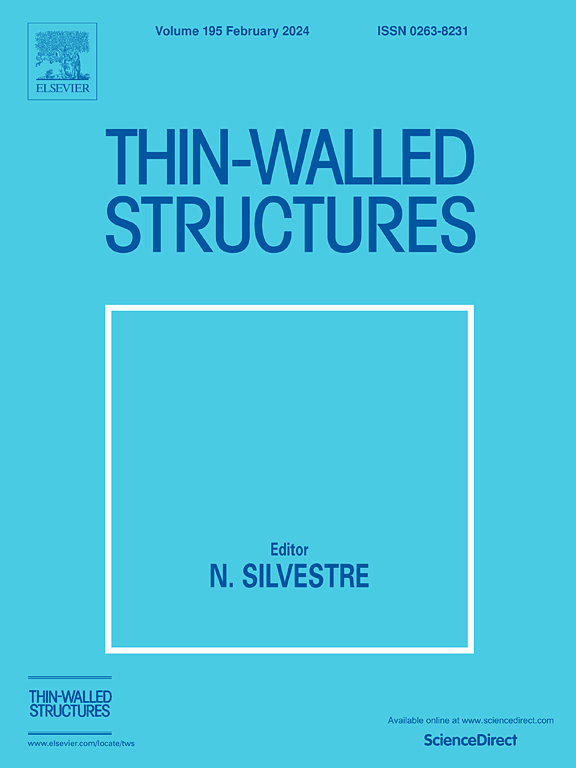A multi-physics overlapping finite element method for band gap analyses of the magneto-electro-elastic radial phononic crystal plates
IF 5.7
1区 工程技术
Q1 ENGINEERING, CIVIL
引用次数: 0
Abstract
In this work, a novel magneto-electro-elastic (MEE) radial phononic crystal (PnC) plate is proposed for the vibration and noise reduction in rotationally symmetric structures. To efficiently predict the structural responses, a multi-physics overlapping finite element method (OFEM) model is suggested for the simulation of the intelligent MEE-based PnCs. The bilinear polynomials and the trigonometric functions are utilized as basis functions to mimic the local behaviors of structure vibration. The numerical performance of the coupling MEE OFEM dynamic model is examined first from two numerical tests. In detail, the computation accuracy, efficiency, and stability of the OFEM are investigated by comparing them with those of the traditional finite element method. Based on the numerical tests, the superior behaviors of the OFEM in the dynamic analysis of MEE-based structures are proven. Then, the radial wave band gap property of the proposed PnC plate is evaluated using the effective OFEM. The phononic band gap for the radial wave is observed, and the impact of structural parameters — specifically, the unit cell width and radial filling factor of the MEE solids — on the band gaps is demonstrated. Overall, these findings can help analysts to develop practical PnCs for various engineering applications.
求助全文
约1分钟内获得全文
求助全文
来源期刊

Thin-Walled Structures
工程技术-工程:土木
CiteScore
9.60
自引率
20.30%
发文量
801
审稿时长
66 days
期刊介绍:
Thin-walled structures comprises an important and growing proportion of engineering construction with areas of application becoming increasingly diverse, ranging from aircraft, bridges, ships and oil rigs to storage vessels, industrial buildings and warehouses.
Many factors, including cost and weight economy, new materials and processes and the growth of powerful methods of analysis have contributed to this growth, and led to the need for a journal which concentrates specifically on structures in which problems arise due to the thinness of the walls. This field includes cold– formed sections, plate and shell structures, reinforced plastics structures and aluminium structures, and is of importance in many branches of engineering.
The primary criterion for consideration of papers in Thin–Walled Structures is that they must be concerned with thin–walled structures or the basic problems inherent in thin–walled structures. Provided this criterion is satisfied no restriction is placed on the type of construction, material or field of application. Papers on theory, experiment, design, etc., are published and it is expected that many papers will contain aspects of all three.
 求助内容:
求助内容: 应助结果提醒方式:
应助结果提醒方式:


